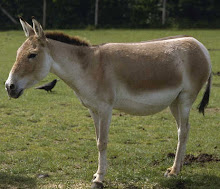 On day 19 of the 7-21 day mailing period, the inaugural issue of Steppe finally appeared in the mailbox. It was well worth the wait.
On day 19 of the 7-21 day mailing period, the inaugural issue of Steppe finally appeared in the mailbox. It was well worth the wait. An amalgam of high-end travel magazine, coffee-table art book, and National Geographic, the writing is intelligent and informed, and the photographs are a mix of art and information. Covering six of the seven ‘Stans (Pakistan properly falls into South Asia, I think) plus the Xianxang Uighur Autonomous Region of China, the articles include an overview of the region by historian Hugh Pope (author of Sons of the Conquerers: The Rise of the Turkic World), book and music reviews, interviews, photoessays, and even Central Asian recipes. The plov recipe is quite tasty (even when made non-vegetarian), though the addition of cumin seeds is very different from Gulnara’s wonderful plov. There is also a recipe for Korean carrot salad, of the type available in Kazakstani markets and enjoyed by many a visitor to the RK.
So, what is Kazakhstan-specific in this issue?
• The cover photo, for starters, is of a “little house on the steppe” in SE Kazakhstan, in the middle of the the flat flowering plain with low blue mountains off in the distance.
 • An article on the detailed golden ornament of Scytho-Siberian animal art, currently on display in the Of Gold and Grass: Nomads of Kazakhstan” exhibit at the Mingei International Museum in San Diego.
• An article on the detailed golden ornament of Scytho-Siberian animal art, currently on display in the Of Gold and Grass: Nomads of Kazakhstan” exhibit at the Mingei International Museum in San Diego.  • A review of The Silent Steppe: The Story of a Kazakh Nomad Under Stalin by Mukhamet Shayakhmetov (currently only in print in the UK), one of the only published first-hand accounts of the 1932-1934 famine. Caused by forced collectivization of the nomadic population, 1.7 million Kazakhs (one-fourth of the entire population) died of starvation during this time.
• A review of The Silent Steppe: The Story of a Kazakh Nomad Under Stalin by Mukhamet Shayakhmetov (currently only in print in the UK), one of the only published first-hand accounts of the 1932-1934 famine. Caused by forced collectivization of the nomadic population, 1.7 million Kazakhs (one-fourth of the entire population) died of starvation during this time. • Five of the “Top Ten Bus Stops” of Central Asia are in Kazakhstan,including a yurta and a mini-mausoleum.
• Five of the “Top Ten Bus Stops” of Central Asia are in Kazakhstan,including a yurta and a mini-mausoleum. • A multi-page feature on the Arasan Public Baths in Almaty. Sigh. Oh to be there . . .
• A multi-page feature on the Arasan Public Baths in Almaty. Sigh. Oh to be there . . .• A short review of The Story of the Apple, the history of which would be utterly incomplete without its birthplace in the orchards of SE Kazakhstan.
• And, for sporting folk, a ski guide to Central Asia, with downhill (Chimbulak near Almaty), cross country (everywhere,including along Astana’s River Ishim) and (gulp) heli-skiing in the Tian Shan. Kazakhstan’s got a lot going for it in its bid for an upcoming Winter Olympics, including the gi-normous skating rink at Medeo (on the way to Chimbulak).
 And of course, much more. My only vested interest in Steppe is wanting enough subscribers to keep the magazine afloat, since it’s the only publication even remotely of its kind. I am waiting for a feature story on the valenki factory near Semey/Semipalatinsk (hint hint) - aren’t they just gorgeous?
And of course, much more. My only vested interest in Steppe is wanting enough subscribers to keep the magazine afloat, since it’s the only publication even remotely of its kind. I am waiting for a feature story on the valenki factory near Semey/Semipalatinsk (hint hint) - aren’t they just gorgeous?Find out about the rest of Steppe, and how to subscribe, at their website. My subcription is a $43 indulgence I’m completely satisfied with.
С Новым годом!
Happy New Year!
1/8/2007 - A review of Steppe was posted today at EurasiaNet, whose writers know a lot more than I. They like it too.












